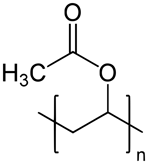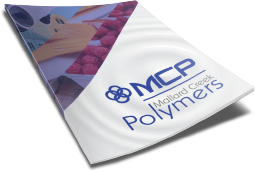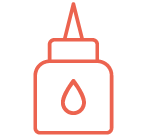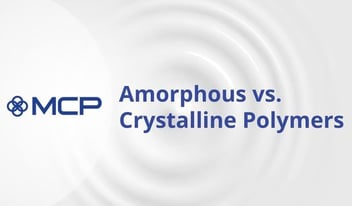
Vinyl acetate monomers (VAM) are essential building blocks for a large number of water-based polymers. Vinyl acetate is prepared from ethylene by reacting it with oxygen and acetic acid over a palladium catalyst. The basic chemical reaction is shown..
Vinyl acetate monomers (VAM) are essential building blocks for a large number of water-based polymers. Vinyl acetate is prepared from ethylene by reacting it with oxygen and acetic acid over a palladium catalyst. The basic chemical reaction is shown below, along with the chemical structure of vinyl acetate monomer.
Vinyl acetate, a colorless liquid with a pungent odor, is rarely used in its pure form. Instead, it’s a precursor to other important industrial compounds. In 2019, the U.S. production volume of vinyl acetate amounted to a total of 1.54 million metric tons.
Polymerization
Vinyl acetate monomer can be polymerized in mass, solution, suspension or emulsion processes. In the latter process, the monomer of vinyl acetate can be  polymerized while dispersed in water to form a milky white emulsion. When acted upon by free-radical initiators, the vinyl acetate monomers can be linked into long, branched chains of polymers. The repeating unit of the polymer is shown to the right:
polymerized while dispersed in water to form a milky white emulsion. When acted upon by free-radical initiators, the vinyl acetate monomers can be linked into long, branched chains of polymers. The repeating unit of the polymer is shown to the right:
In the emulsion polymerization products, polyvinyl acetate emulsion homopolymer and vinyl acetate-based emulsion copolymers have significant industrial importance. Polyvinyl acetate emulsion homopolymer was the first synthetic polymer latex to be made on a commercial scale, and today it accounts for 28 percent of the total waterborne synthetic latexes.
CAN'T FIND WHAT YOU'RE LOOKING FOR?
Types of Vinyl Acetate-based polymers
Vinyl acetate-based polymers are extremely versatile. The milky white fluid formed during emulsion polymerization can be processed directly into latex paints, in which the polymer forms a strong, flexible, adherent film. Vinyl acetate-based polymers also offer excellent adhesion to common substrates — one of the most common uses of a vinyl acetate-based polymer is white glue, otherwise known as Elmer’s glue or wood glue. These polymers have low levels of volatile organic compounds (VOCs), which means less off-gassing, odors and a lower environmental impact. Additionally, vinyl acetate-based polymers have higher viscosities, which means they are more resistant to flow — an important property for adhesives and paints. Combine these properties with low cost and ready availability, and you’ll find these polymers in many everyday products.
There are three major families of vinyl acetate-based polymers:
- Polyvinyl acetate homopolymer are composed only of the vinyl acetate monomer, combined with polyvinyl alcohol (PVOH) and cellulosic stabilizers. Polyvinyl alcohol (PVOH) is used in adhesive formulations as a thickener and emulsion stabilizer, contributing to the vinyl acetate-based polymer emulsion’s desirable viscosity qualities. Cellulosic stabilizers are amphiphilic agents widely used in the coatings industry as rheology modifiers and stabilizers due to their ability to adsorb at the interface between oil and aqueous solvent solutions. Polyvinyl acetate homopolymers are most widely used in wood glue and school glue for their strong adhesive properties, but can also be used in construction products, carpet backing, paper and paperboard coatings, and engineered fabrics.
- Vinyl acetate ethylene emulsion a copolymer of vinyl acetate and ethylene —are high-performing emulsions with increased flexibility, unique moisture resistance and tack and adhesion in low temperature and wet conditions. VAEs adhere well to nonporous surfaces, such as vinyl and aluminum, with strong initial adhesion and high wet tack, as well as good creep resistance. These copolymers are used in a variety of both industrial and consumer applications, including waterproofing coatings, carpet backings, engineered fabrics, paints and coatings, woodworking adhesives, laminating applications and others.
- Vinyl acrylic latex is a copolymer of vinyl acetate and an acrylate monomer, most commonly butyl acrylate. Vinyl acrylic latexes are both very flexible and water resistant, and their economical price means they are used extensively in interior architectural paints in both consumer and industrial settings. Most interior house paint is made from vinyl acrylic latex, as it is the best option for adhesion to wood. This copolymer can also be used in adhesives, pigment dispersions and sealants, as well as for paper saturation and in engineered, non-woven fabrics.
Benefits:
- Hydrophilic backbone – tunable when combined with acrylic monomers for increase exterior durability and non-yellowing.
- High affinity for cellulosic substrates
- High mechanical stability
- Good adhesion to LSE substrates
- Easily blended with aminoplast resins
- Good plasticizer response
- Low cost
Consult with MCP
Is a vinyl acetate-based polymer the right fit for your project? Choosing the right emulsion polymer is essential to achieving the desired result for your application, whether it be a paint, nonwoven material or an adhesive. Work with Mallard Creek Polymers and we can customize an emulsion for your specific needs. What can we make for you today?

 Construction
Construction
 Nonwovens
Nonwovens
 Adhesives
Adhesives
 Textiles
Textiles
 Printing & Packaging
Printing & Packaging
 Paper
Paper
 Paints & Coatings
Paints & Coatings





